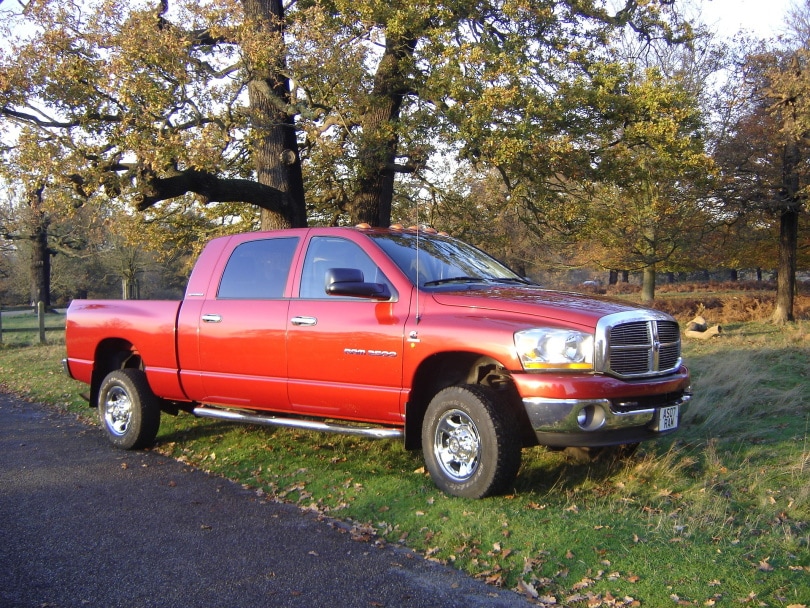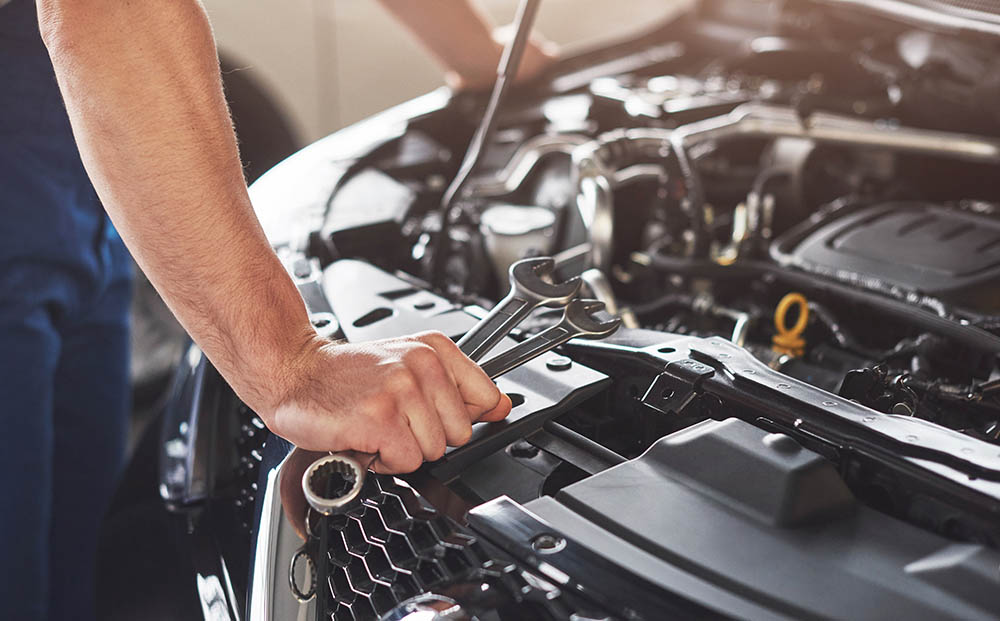What Is a Hemi Engine? Functionality, Types, Uses, Pros & Cons
-
Codee Chessher
- Last updated:

Hemi engines are an atypical type of engine designed for greater power than typical engines, and they’re usually beloved by gearheads everywhere. Chrysler is the most well-known maker of Hemi vehicles, and they have a long, interesting history. Let’s check out how Hemi engines work, why you may or may not want one, and other fascinating info about them.
Click Below to Jump Ahead:
How Do Hemi Engines Work?
Hemi engines are named for their hemispherical shape, which is really more of an undersized sphere. It’s ostensibly named for the hemispheres of the globe, but the shape isn’t exactly the same. However, the name quickly stuck as Hemi engines from the 1950s onwards were known for power at the expense of fuel economy. Chrysler was the top name in Hemi engines, with iconic cars like the Dodge Charger and Challenger showing off the performance Hemis were capable of.
The hemispherical shape of a Hemi engine allows it to burn more fuel in the same amount of time as a regular engine, which produces more explosive power all at once. The cylinders are noticeably smaller, which means less heat is lost during combustion. Because of the unique dome shape, the cylinder valves are tilted and less affected by the cylinder wall blocking airflow. This has a big effect, allowing for more horsepower than typical box-style engines. Hemi engines typically run at 450 horsepower on the low end, with more powerful Hemis boasting 1,000 horsepower or more.
You would think that Hemis use more gas than typical engines, and this is often true. However, Hemi engines drastically cut down on wasted air and exhaust versus regular engines. This lets them be more fuel-efficient than they have any right to be. However, you’ll still use a lot of gas because Hemis are universally designed for maximum power. Compression ratios are an area that Hemis struggle with. Because of the unique shape, increasing compression via standard techniques is difficult, if not outright pointless.

What Are the Different Types of Hemi Engines?
Early experimentation with Hemi engines during World War II yielded the Republic P-47 Thunderbolt fighter plane, and later on, the M47 Patton tank. However, in the 1950s Chrysler began focusing on what Hemi engines could do in cars. There have been three generations of Hemi engines created by Chrysler, with each generation much improved over the last.
1. FirePower: 1951–1958
The first commercial Hemi engine created by Chrysler was the FirePower, which actually had three distinct variations within Chrysler’s divisions. Chrysler, Dodge, and DeSoto each had their own take on the FirePower engine, while Plymouth didn’t have Hemis at all. This first generation of Hemi engines only ran for 7 years.
2. 426 Hemi: 1964–1971
The second generation of Hemi engines was unveiled in 1964, dubbed the 426 Hemi because the design displaced 426 cubic inches. Initially, this Hemi was only available in Nascar race cars. After largely dominating races in 1964, the 426 Hemi was disqualified from the 1965 season by a special rule—you couldn’t qualify for Nascar if you didn’t offer a mass market version of that engine. Later that same year, Chrysler introduced four limited edition cars with the 426 Hemi engine to the general public.
3. HEMI: 2003-Present
The third and current generation of Hemi engines was introduced in 2003, and they’re much less hemispherical than previous designs, using two spark plugs per cylinder for more even combustion and fewer emissions. The HEMI offers similar horsepower to the previous generation of Hemi engines, but with improvements made focused on efficiency and emission reduction.

Where Are Hemi Engines Used?
Hemi engines have been produced by many car makers other than Chrysler, but they rarely stick around long. Chrysler is the only major car manufacturer to widely use Hemi engines in their vehicles. Some of these have become top-selling cars in the US, and others are beloved by car enthusiasts. Let’s check out a few cars that use Hemi engines today.
Cars With Hemi Engines:
- Dodge RAM
- Dodge Charger
- Dodge Challenger
- Chrysler 300 SRT
- Jeep Grand Cherokee
- Dodge Durango
- Jeep Wagoneer
Advantages of Hemi Engines
Hemis have a number of advantages over regular engines that make them attractive for car aficionados and the general public. Let’s check out how these advantages might make you want a Hemi engine yourself.
Greater Power
Hemi engines produce more power because they have a smaller surface area, and their shape prevents fuel from unevenly burning in the combustion chamber. By contrast, the cylinder walls in box engines are often cold, which increases heat loss during combustion. By effectively “squeezing” the fuel in the chamber, Hemis produce prodigious amounts of horsepower and torque.
Larger Valves Provide More Air Flow
Because of the way valves are tilted away from the cylinder walls within a Hemi engine, they provide much more air flow to the combustion chamber. This means more air to mix with fuel and power your engine, and more efficient combustion overall.

Disadvantages of Hemi Engines
Despite their powerful advantages, Hemi engines haven’t been widely adopted for a reason. They have a few important key flaws that limit their usefulness. Let’s check out why you might want to not get a Hemi.
Hemis Are Limited to Two Valves
Most modern cars use four slightly smaller valves per cylinder to maximize airflow and reduce engine strain. Because of the Hemi engine’s shape, it’s impossible to put four valves per cylinder. This limits what engineers will be able to improve in the future. Simply put, other engines are getting better and the Hemis are standing still.
People Want Smaller Engines
Hemi engines are large out of necessity, but public sentiment has shifted to favor smaller, more efficient combustion chambers. Most people don’t want gas-guzzling performance. Instead, they just want something to get them from point A to point B comfortably. While some people will always prize the raw performance of Hemis, they’re more of a niche pick these days.
Frequently Asked Questions (FAQs)
Are Hemis reliable
Hemi engines have a robust design that lasts longer than a typical box-style engine. Dodge vehicles with Hemi engines have been known to last upwards of 200,000 miles with no serious issues. However, Hemis may require special knowledge to work on. If your Hemi does ever need to be repaired, you’ll find yourself with a higher bill.\
What common problems do Hemi engines have?
While they’re typically reliable machines, Hemi engines have a few problems that are more prevalent than others. The most common issue is an engine ticking noise, which may be harmless or be followed by serious engine failure. Other than that, broken exhaust manifold bolts are the most common issue reported with Hemis.
Do Hemis hold their value or depreciate?
Hemis depreciate like every vehicle, but their larger size means they will depreciate at a slower rate than typical box-style engine cars. As electric vehicles begin to compete with Hemis on a mass market level, we could potentially see Hemis depreciating faster.

Final Thoughts
Hemi engines are powerful, producing a strong, smooth ride. Their unique shape makes their power possible but also limits how they can be improved in the future. Either way, Hemis will always be popular among performance car enthusiasts and mechanics.
Featured Image Credit: Hemi engine (Image Credit: VX1NG, Wikimedia Commons CC BY-SA 4.0)
Contents

